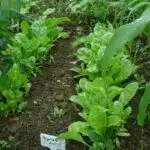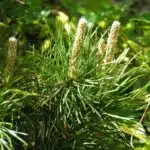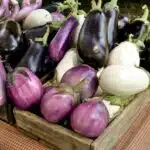Petunias are one of the most popular flowering plants in the world, known for their vibrant colors and easy maintenance. With hundreds of varieties available, choosing the right type of petunia can be a daunting task for both experienced gardeners and novices alike. As a petunia horticulture expert, I have dedicated my career to helping individuals make informed decisions when selecting the perfect petunia for their garden.
When choosing a petunia, it is crucial to consider factors such as climate, soil type, and sunlight exposure. Each variety of petunia has its own unique set of requirements that must be met in order to thrive. Some prefer cooler temperatures, while others require full sun exposure. Understanding these needs will not only ensure that your petunias look their best but will also help prevent disease and other common issues that may arise. In this article, we will explore how to choose the right type of petunia for your specific gardening needs, providing you with valuable insights into how to create a beautiful and thriving garden.
The Importance Of Choosing The Right Petunia
When it comes to choosing the right petunia for your garden, it’s important to understand that not all petunias are created equal. This may seem like common sense, but you’d be surprised how many people overlook the importance of selection criteria. As a petunia horticulture expert, I can tell you that selecting the right type of petunia is crucial in achieving a flourishing and vibrant garden.
So why is it so important? Well, for starters, different types of petunias have different climate requirements. If you live in an area with hot summers, you’ll want to choose a heat-tolerant variety. On the other hand, if you live in an area with cooler summers or shorter growing seasons, you’ll want to choose a cold-tolerant variety. Selecting the wrong type of petunia can result in poor growth or even death of your plants.
Another factor to consider when choosing the right petunia is color and size. Petunias come in a range of colors from white and pink to purple and red. Some varieties even have striped or bi-colored blooms. Additionally, petunias come in a range of sizes from small dwarf varieties to large grandiflora types. The size and color of your petunias can have a big impact on the overall look and feel of your garden.
Understanding these selection criteria is vital in choosing the right type of petunia for your garden. In the next section, we will discuss climate requirements in more detail and provide tips on how to select the perfect variety for your specific location.
Understanding Climate Requirements
Having understood the importance of choosing the right petunia, it is essential to ensure that the chosen breed can adapt to the climate conditions of your region. Not all petunias are created equal when it comes to temperature ranges and other climatic factors. Thus, you need to carefully assess which type of petunia will thrive in your area.
Climate adaptation is a crucial factor to consider when selecting a petunia variety. Different types of petunias have different temperature range tolerances, and they may not survive in climates outside their preferred zones. Some petunias prefer cooler temperatures while others thrive in warmer conditions. Understanding these preferences will help you choose a type that can withstand your region’s climate.
When choosing your ideal petunia type, it is vital to check its temperature range requirements. This information should be readily available on the seed packet or plant label. You can also consult with horticulturists or gardening experts in your area for recommendations on which varieties grow best in specific regions. By selecting a breed that thrives within your climate, you are ensuring that it grows healthy and produces beautiful blooms throughout the growing season.
To continue with determining which type of petunia best suits your needs, understanding sunlight exposure needs is another essential factor.
Sunlight Exposure Needs
One of the most important factors to consider when choosing the right type of petunia is sunlight exposure. Petunias require a certain amount of sunlight to thrive and produce vibrant blooms. However, the amount of sunlight needed can vary depending on the variety of petunia you choose.
Some petunia varieties prefer partial shade, while others thrive in full sun. If you have an area in your garden that receives only partial sunlight throughout the day, it’s best to choose a petunia variety that can tolerate these conditions. On the other hand, if you have a sunny spot in your garden that receives direct sunlight for most of the day, opt for a petunia variety that can handle these intense conditions.
When choosing a petunia variety for shady areas, look for those labeled as “shade tolerant” or “part shade.” These varieties have been specifically bred to handle less sunlight and will still produce beautiful blooms even in shadier spots. Some popular shade-tolerant varieties include Wave, Supertunias, and Surfinias.
Transition into subsequent section about soil type considerations: Now that we’ve covered the importance of considering sunlight exposure when choosing petunias, let’s move on to another crucial factor: soil type considerations.
Soil Type Considerations
1.Organic soil is important for the cultivation of petunias as it provides essential micronutrients, organic matter and drainage.
2.Organic matter also helps to promote healthy root growth and encourages a plentiful flowering season.
3.The pH balance of the soil should be between 6.0 and 7.0, as this is the optimal range for petunias to thrive.
4.It is important to consider the soil type when cultivating petunias in order to ensure an abundant flowering season and healthy root growth.
Organic Soil
When it comes to choosing the right type of soil for your petunias, organic soil is a great option to consider. Organic soil is made from natural materials such as compost, manure, and decomposed plant matter. This type of soil has numerous benefits that can promote healthy growth in your petunias.
One of the main benefits of organic soil is its ability to retain moisture. This means that your petunias will have access to water even in dry conditions, which can be especially beneficial during hot summer months. Additionally, organic soil contains nutrients that are slowly released over time, providing a steady source of food for your plants. The application of organic soil can also improve the overall health of your garden by promoting beneficial microorganisms and reducing the need for chemical fertilizers.
When applying organic soil to your petunia garden, it’s important to ensure that it’s well-draining and not too compacted. You can mix the organic soil with sand or perlite to improve drainage and prevent waterlogged roots. Additionally, make sure that the pH level of the organic soil is appropriate for petunias (around 6.0-7.5). With proper application, you’ll be able to enjoy beautiful and healthy petunias throughout the growing season without any harmful chemicals or synthetic fertilizers.
In conclusion, using organic soil can provide many benefits for your petunia garden including improved moisture retention and nutrient availability. By ensuring proper application and maintenance practices, you’ll be able to enjoy vibrant and healthy petunias all season long without harming the environment or relying on synthetic products.
Ph Balance
When it comes to petunia horticulture, choosing the right soil type is crucial for their optimal growth and health. One important aspect that gardeners should consider when selecting soil for their petunias is the pH balance. The pH level of soil affects the availability of nutrients to plants, which can have a significant impact on their overall health and development.
Gardeners should perform a pH testing of their soil before planting their petunias. Petunias thrive in soils with a slightly acidic to neutral pH range of 6.0-7.5. If the pH level is outside this range, gardeners can make necessary adjustments by adding soil amendments such as lime or sulfur to raise or lower the pH level accordingly.
Maintaining proper pH balance in your soil can result in healthier plants and more vibrant blooms. By taking the time to test and adjust your soil’s pH level, you’ll be able to provide your petunias with ideal growing conditions that will help them flourish throughout the season.
Annual Vs. Perennial Petunias
Soil type is an essential consideration when choosing the right type of petunia. Petunias prefer well-draining soil, and they do not tolerate wet roots. The ideal pH range for petunias is between 6.0 to 7.5. If your soil does not meet these requirements, you can amend it by adding organic matter such as compost or peat moss.
When selecting petunias, it’s crucial to determine whether you want indoor or outdoor plants. Indoor petunias are best grown in containers and require different care than outdoor ones. Outdoor petunias come in both annual and perennial varieties that thrive in garden beds, borders, hanging baskets, and window boxes. Best varieties for beginners include grandiflora and multiflora types that produce large blooms on bushy plants with a spreading growth habit.
To choose the right type of petunia, consider dwarf vs. spreading varieties’ growth habit. Dwarf varieties grow up to 10 inches tall and are perfect for container gardens or as edging plants along walkways or garden beds. Spreading varieties grow up to 18 inches tall and are ideal for filling large garden spaces or cascading over walls or hanging baskets. Some popular spreading petunia types include surfinia, wave, tidal wave, and supertunia.
Considering all these factors will help you choose the perfect type of petunia for your growing space and preferences. Remember to check the plant label carefully before making a purchase to ensure it meets your specific needs and requirements. With proper care and maintenance, your chosen petunia variety will provide colorful blooms throughout the growing season.
Dwarf Vs. Spreading Varieties
When it comes to choosing the right type of petunia for your garden or container, one major consideration is whether to go with a dwarf or spreading variety. Dwarf petunias are generally smaller in size and more compact in growth habit, while spreading petunias tend to trail and spread out over a larger area. Both types have their own unique advantages and disadvantages.
If you’re looking to create stunning hanging baskets or containers, the spreading varieties are often the best choice. They will flow over the edges of the container and create a cascading effect that is simply beautiful. Dwarf varieties, on the other hand, may be better suited for border plantings or as an edging plant in a landscape bed.
While mixing dwarf and spreading petunias can create a fuller effect, it’s important to choose varieties that have similar growing habits. If you mix two types that grow at different rates or heights, one variety may end up overshadowing the other and creating an uneven look. Make sure to do your research before combining different types of petunias in one container or planting bed.
When deciding between dwarf and spreading varieties of petunias, consider your desired planting location and purpose for the plants. Each type has its own unique characteristics that can create stunning displays if used appropriately. In the next section, we’ll delve into another important consideration when selecting petunias: single vs double blooms.
Single Vs. Double Blooms
Dwarf vs. spreading petunias are important to consider when selecting the right type of petunia, but another important factor is choosing between single and double blooms. Single blooms have only one layer of petals while double blooms have multiple layers.
One advantage of single blooms is that they tend to be more heat-tolerant than double blooms. They can also withstand wind and rain better because they are less likely to become waterlogged and weighed down by their petals. Additionally, single blooms often have a longer blooming period than doubles.
On the other hand, double blooms are often considered more attractive because of their fullness and depth. They also tend to come in a wider range of colors and patterns than single blooms. However, double blooms may require more maintenance as they are prone to diseases such as botrytis (gray mold) due to their thicker petals holding onto moisture longer.
- When selecting single bloom petunias, look for varieties with vibrant colors and strong stems.
- For double bloom petunias, choose those with tightly packed petals for maximum fullness.
- Consider mixing both types of petunias in your garden for a variety of textures and colors.
Next, we will discuss the various color options available in petunias and how to choose the best colors for your garden design.
Color Options
One of the most common concerns when choosing petunias is the color. Some gardeners may believe that certain colors are more difficult to grow or require specific growing techniques. However, this is not necessarily true. Petunias come in a wide range of colors, from bright pinks and purples to soft pastels and even pure white. Each color has its own unique beauty and can be grown successfully with proper care.
When selecting the right color for your garden, consider the overall theme or color scheme you wish to achieve. If you want bold, eye-catching colors, then opt for petunias in shades of fuchsia, purple or red. For a softer look, choose pastel shades such as pink or lavender. White petunias can add elegance and sophistication to any garden design.
In terms of popularity, some of the most sought-after hybrid petunias include the Wave series and Supertunia varieties. These hybrids have been bred for their superior performance and disease resistance. Growing techniques for these hybrids are similar to those used for standard petunias but may require slightly different fertilization schedules or pruning methods depending on the specific hybrid variety selected.
Scented Petunias
Scented petunias are a popular choice among garden enthusiasts because of their delightful fragrance. These plants come in a variety of colors and sizes, making them easy to incorporate into any garden design. The benefits of scented petunias go beyond their sweet aroma; they also attract butterflies and other pollinators to your garden.
Caring for scented petunias is relatively easy if you follow a few basic tips. These plants prefer full sun and well-draining soil. Watering should be done regularly, but not excessively, as too much water can lead to root rot. Deadheading spent blooms will encourage new growth and keep the plant looking neat and tidy.
If you’re looking for an easy way to add fragrance to your garden, consider planting scented petunias. With their vibrant colors, sweet aroma, and pollinator-attracting abilities, these plants are sure to bring joy to any gardener. Plus, with proper care, they will continue to bloom all season long.
Disease Resistance
- Petunias are popular garden plants and come in a wide range of varieties, each with its own level of disease resistance.
- Varieties of petunia with disease resistance are classified into three categories: tolerance, resistance, and immunity.
- Disease resistance can be evaluated by monitoring plant health and assessing the presence of diseases in the environment.
- It is important to select a variety of petunia that is suitable for the climate and the available growing conditions to ensure successful disease resistance.
Types Of Disease Resistance
As a petunia horticulture expert, I understand the importance of selecting the right type of petunia for your garden. One factor to consider is disease resistance. There are several types of disease resistance that you should be aware of when choosing your petunias.
Firstly, there are varieties that are naturally resistant to certain diseases. For example, some petunias have been bred to resist common fungal diseases like powdery mildew and botrytis. These varieties can save you time and money on pest control measures while still providing a beautiful display in your garden.
Secondly, breeding advancements have allowed for the creation of petunias with broader disease resistance. These varieties may not be completely immune to all diseases but can withstand a wider range of threats than other petunias. This is especially important if you live in an area where certain diseases are more prevalent.
Lastly, some petunias have been genetically modified to increase their disease resistance. While this may sound concerning to some individuals, it has allowed for the creation of highly resistant petunia varieties that can protect against multiple diseases without the use of harmful chemicals.
In conclusion, understanding the different types of disease resistance is crucial when selecting the right type of petunia for your garden. Whether you opt for naturally resistant varieties or more advanced breeding techniques, choosing a disease-resistant petunia will ensure a healthy and vibrant addition to your outdoor space.
Evaluating Disease Resistance
Plant selection is a critical aspect of gardening, and it becomes even more crucial when selecting plants that are resistant to diseases. Disease resistance in plants ensures healthy growth, reduces the cost of pest control measures, and conserves soil health. When evaluating disease resistance in petunias, several factors need to be considered.
Firstly, consider the specific diseases prevalent in your region. Some petunias may be resistant to fungal diseases like powdery mildew but may not be able to withstand bacterial infections or viruses. Understanding which diseases pose a threat to your garden can help you select the best petunia variety to plant.
Secondly, evaluate the overall health of your soil. Soil that is nutrient-rich and well-draining promotes plant health and reduces the likelihood of disease outbreaks. Opting for disease-resistant petunias can further ensure that your garden stays healthy and vibrant.
Lastly, look for petunia varieties that have been tested for their disease resistance by certified organizations like All-America Selections or Proven Winners. These organizations conduct rigorous testing on new plant varieties before releasing them into the market. Choosing certified disease-resistant petunias can give you peace of mind knowing that they have undergone extensive testing and are proven to thrive in varying climatic conditions.
Selecting disease-resistant petunias not only ensures a beautiful display in your garden but also promotes sustainable gardening practices by reducing chemical use and preserving soil health. By taking into consideration factors such as prevalent diseases, soil health, and certified testing results, you can confidently choose the best petunia variety for your garden.
Watering And Fertilizing Needs
When it comes to petunias, one of the most important aspects of their care is ensuring they receive adequate watering and nutrients. Petunias are known for being thirsty plants, which means that watering frequency is crucial. These plants require consistent moisture in order to thrive, but overwatering can lead to root rot and other issues. In general, petunias should be watered deeply once or twice per week, depending on the weather and soil conditions.
In addition to proper watering frequency, it’s also important to pay attention to nutrient requirements when growing petunias. These plants need a balanced fertilizer that contains nitrogen, phosphorus, and potassium in order to grow strong roots and produce healthy blooms. However, too much fertilizer can actually harm petunias rather than help them. It’s best to follow the instructions on your chosen fertilizer carefully and avoid over-fertilizing your plants.
Overall, providing the right amount of water and nutrients is essential for growing healthy petunias. By paying attention to these factors and adjusting your care routine as needed based on weather conditions and other variables, you can enjoy beautiful blooms all season long. Moving forward into container vs. ground planting, it’s important to consider how these factors may differ depending on your choice of planting method.
Container Vs. Ground Planting
- Petunias are popular annual plants that are easy to maintain and add vibrant color to any garden or outdoor space.
- Planting petunias in the ground allows them to spread, while container planting restricts their growth and keeps them compact.
- Ground planting requires soil that is well-draining and rich in nutrients, while container planting can use a less nutrient-rich soil type.
- Petunias planted in containers require regular fertilizing as the soil cannot provide the same level of nutrients as ground soil.
- When planting petunias in the ground, it is important to choose a spot that receives ample sunlight throughout the day.
- Petunias planted in containers can be more easily moved to provide protection from extreme weather or to provide more sunlight.
Container Planting
Container Planting is a popular choice for those who have limited space, or simply want to add a splash of color to their outdoor areas. When it comes to Petunias, container arrangements are an excellent option as they allow for more control over the growing environment. Petunias thrive in well-draining soil and regular watering, which can be more easily achieved in a container garden. Hanging baskets are a great way to display cascading petunia varieties, such as the Surfinia series, which create a stunning visual effect.
When choosing the right type of petunia for your container garden, there are several factors to consider. First and foremost is the size of your container – larger containers will provide more room for root growth and allow you to plant larger varieties. Additionally, consider the amount of sunlight your container will receive – some petunia varieties require full sun while others prefer partial shade. Lastly, think about the color scheme you want to achieve – Petunias come in a wide range of colors and patterns that can be mixed and matched to create visually stunning displays.
Overall, container planting provides an excellent opportunity to showcase the beauty of Petunias in small spaces or on patios and balconies. With careful consideration given to factors such as container size, sunlight exposure, and color scheme preferences, anyone can create a beautiful Petunia display that will bring joy throughout the growing season.
Ground Planting
When it comes to growing petunias, there are two main options: container planting and ground planting. While container planting provides more control over the growing environment, ground planting offers a larger area for root growth and can be a more cost-effective option for those with large garden spaces. When choosing to plant petunias in the ground, it is important to consider factors such as planting depth and spacing requirements.
Petunias should be planted at a depth of around 1 inch, with enough space between each plant to allow for proper air circulation and growth. Mulching can help to retain moisture in the soil, while also providing insulation during colder months. However, proper weeding techniques must also be employed to prevent competition for nutrients and water.
Overall, ground planting offers a unique opportunity to showcase the beauty of Petunias in a larger outdoor space. With careful consideration given to factors such as planting depth, spacing requirements, mulching, and weeding techniques, anyone can create a beautiful Petunia display that will bring joy throughout the growing season.
Soil Requirements
As a petunia horticulture expert, it is important to understand the differences between container and ground planting, particularly when it comes to soil requirements. While ground planting offers more space for root growth, container planting allows for greater control over the growing environment. Regardless of which option is chosen, proper soil preparation is crucial for optimal petunia health and growth.
When selecting soil for container planting, it is important to choose a high-quality potting mix that is specifically formulated for container gardens. These mixes typically contain a blend of peat moss, perlite, vermiculite, and other organic materials that allow for improved drainage and aeration. Additionally, adding compost or fertilizer can help to improve nutrient levels in the soil.
For ground planting, it is important to test the pH levels of the soil and make any necessary adjustments before planting petunias. These flowers prefer slightly acidic soils with a pH range of 6.0-7.5. Adding lime can help to raise pH levels if necessary. Additionally, improving drainage by amending heavy clay soils with organic matter can help to prevent waterlogged roots and promote healthy growth.
In conclusion, understanding the soil requirements for petunias when choosing between container and ground planting is essential for success in growing these beautiful flowers. Whether opting for container or ground planting, ensuring proper nutrient levels, drainage, and pH levels will contribute to healthy petunia growth and vibrant blooms throughout the season.
Petunia Companions In The Garden
When it comes to choosing the right type of petunia, there are a few key factors to consider. One important consideration is whether you plan to plant your petunias in containers or directly in the ground. Container planting offers more versatility and control over growing conditions, while ground planting allows for larger plants with deeper root systems. Another important factor is selecting companion plants that will benefit your petunias and attract pollinators.
Companion planting is a great way to support your petunias and create a thriving ecosystem in your garden. Some plants that work well as companions for petunias include marigolds, geraniums, and zinnias. These plants not only add visual interest to your garden but also provide natural pest control and attract beneficial insects like bees and butterflies. Additionally, incorporating herbs like basil or mint can help deter pests and improve soil health.
Another important aspect of choosing the right type of petunia is selecting varieties that are suited to your specific climate and growing conditions. Some common problems that can arise when growing petunias include issues with pests like aphids or spider mites, fungal diseases like powdery mildew, or nutrient deficiencies resulting from poor soil quality. To avoid these problems, it’s important to select disease-resistant varieties and ensure proper watering, fertilization, and soil preparation.
Transition: While there are certainly challenges involved in growing healthy petunias, by carefully considering planting conditions, companion plants, and variety selection you can create a thriving garden full of colorful blooms. In the next section we’ll explore some common problems that may arise when growing petunias and offer some solutions for overcoming them.
Common Petunia Problems And Solutions
Petunias are generally easy to care for, but they can still fall victim to common pests. One of the most common pests that petunias face is aphids. These tiny insects suck on the sap of the plant, causing yellowing or curling leaves and stunted growth. To control aphids, try spraying the plants with a mixture of dish soap and water. You can also introduce natural predators like ladybugs or lacewings.
Another pest that petunias may encounter is spider mites. These small arachnids feed on the underside of leaves, causing stippling or bronzing on the foliage. To prevent spider mites, keep the plants well-watered and avoid overcrowding them. If you do notice an infestation, you can try using a spray made from neem oil or insecticidal soap.
If you prefer organic pest control methods, there are several options available for dealing with common petunia pests. For example, you can use companion planting to repel insects and attract beneficial predators. Planting herbs like basil or marigolds near your petunias can help keep pests at bay while also adding visual interest to your garden. Additionally, using mulch around your plants can help conserve moisture in the soil and prevent weed growth, which can also attract unwanted insects.
Moving on from common petunia problems and solutions, it’s important to note that regular maintenance is key to keeping your plants healthy and thriving. In the next section, we’ll cover some helpful tips and tricks for caring for your petunias throughout the growing season.
Petunia Maintenance Tips And Tricks
Common Petunia Problems and Solutions have been discussed in the previous section. Now, let’s talk about choosing the right type of petunia to grow in your garden. Did you know that there are over 35 different species of petunias available in the market? Each variety has its unique characteristics, making it important to choose the right one for your container gardening or landscape needs.
One factor to consider when selecting a petunia is its growth habit. If you’re looking for a trailing variety that cascades over hanging baskets or window boxes, then trailing petunias like Surfinia and Wave are perfect choices. Meanwhile, if you prefer compact plants that produce abundant flowers, then multiflora and grandiflora types like Supertunia and Shockwave are excellent options.
Another essential factor to keep in mind when selecting a petunia is pest control. Some varieties of petunias are resistant to certain pests, while others may be more susceptible. For instance, if aphids are a common problem in your garden, try growing multiflora or grandiflora types as they tend to be more resistant. On the other hand, if slugs are an issue, then opt for trailing varieties as they are less likely to attract these pests.
Maintaining healthy and vibrant petunias requires careful consideration when selecting the appropriate variety for your garden’s specific needs. Remember that each type has different growth habits and levels of resistance against common pests. By keeping these factors in mind when choosing your next batch of petunias, you can ensure a successful and thriving garden with beautiful blooms throughout the season!
Conclusion
Choosing the right type of petunia is crucial for a successful garden. As a petunia horticulture expert, it is important to understand the climate requirements, sunlight exposure needs, soil type considerations, and annual vs. perennial petunias. It is also vital to consider container vs. ground planting and petunia companions in the garden.
Did you know that petunias are one of the most popular garden flowers in North America? According to a survey by Garden Research, Inc., petunias were ranked as the top annual flower purchased by consumers in 2020. With their wide range of colors and versatility, it’s no wonder why they are so beloved.
To ensure that your petunias thrive, it’s essential to choose the right variety based on your specific climate and growing conditions. By understanding their unique needs and following proper maintenance tips, you can enjoy a beautiful and vibrant garden filled with these stunning flowers.
Image Credits
- “Pink in Detail, Petunias” by cobalt123 (featured)





























